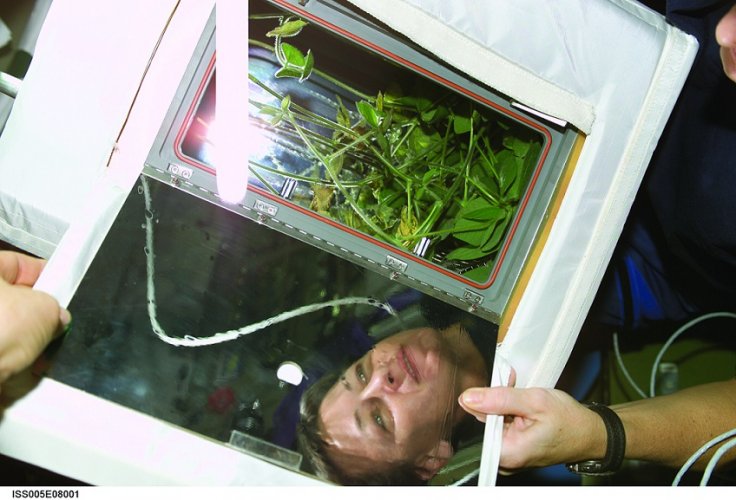The International Space Station (ISS) has been working on an ongoing experiment that's focused on growing plants and crops in space. According to NASA, the results of the experiment can help improve the quality of plant production on Earth and assist in sustaining human space outposts in the future.
Astronauts aboard the ISS are conducting an experiment for the study known as Advanced Astroculture (ADVASC). It involves growing resilient and long-lasting plants in microgravity.
Growing And Preserving Plants In Space

For the study, ADVASC experiments were brought to the ISS through previous resupply missions. Aside from the experiments, a plant-growth chamber was also brought on board. Through this chamber and another device known as the ADVASC air scrubber, ISS astronauts were able to grow plants without ethylene.
This is a naturally occurring odourless and colourless gas produced by plants. Its presence encourages decay since it can ripen fruits at a faster rate and speed up the ageing process of flowers. Aside from increasing the lifespan of plants, the ISS experiment also revealed how plants and crops could be preserved in space.
"In closed growing environments such as a spacecraft or terrestrial greenhouse, ethylene builds up quickly," NASA explained. "As a result, plants mature too fast. Removing ethylene, therefore, is important to preserving crops not just in space, but also on Earth, where grocers and florists have an interest in longer product shelf life."
Earth And Space-Based Benefits Of ADVASC

As noted by the agency, the results of the experiment can greatly benefit industries on Earth that rely on plants and crops. They can also be used in addressing food supply issues currently facing various regions on the planet.
Aside from these, the ADVASC study can also play a huge role in the preparation of long-term space missions. Being able to grow and preserve crops in space will play a direct role in the success of expeditions and future human outposts
"Understanding the effects of gravity on plant life is essential in preparing for human exploration beyond low-Earth orbit," NASA stated. "The ability to produce high-energy, low-mass food sources during spaceflight will enable the maintenance of crew health during long-duration missions while having a reduced impact on resources necessary for long-distance travel."








